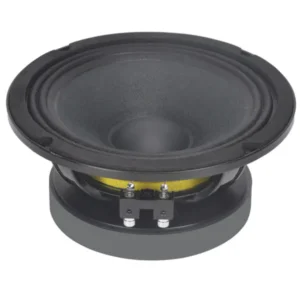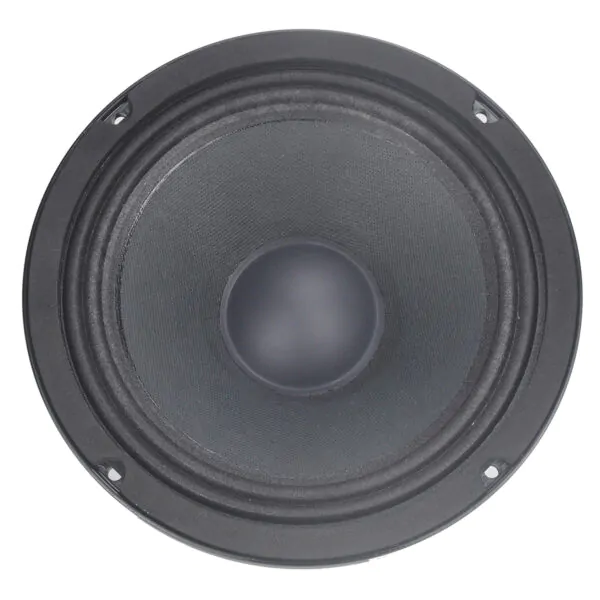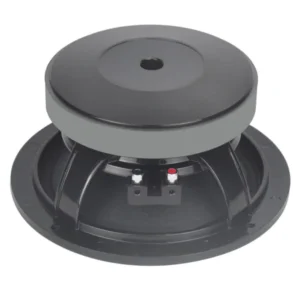When upgrading a car audio system, many drivers wonder why their music sounds thin, even after installing a subwoofer and tweeters. The answer often lies in the missing car midrange. This critical component covers the most important frequencies—vocals, guitars, pianos—that make music feel alive. Without it, the sound is hollow and unbalanced.
This guide will help you understand what a car midrange is, why it matters, and how to choose the right one to solve common audio frustrations.
What Is a Car Midrange?
A car midrange speaker is designed to reproduce middle frequencies, typically from 300Hz to 5kHz. These frequencies include most of the human voice and many instruments.
Think of it this way:
Tweeters handle the high notes.
Subwoofers handle the deep bass.
Midrange speakers bridge the gap, ensuring vocals and instruments sound natural.
Without a midrange, even the best bass and treble feel disconnected, leaving listeners dissatisfied.
Why Car Midrange Matters
Car owners often report:
“The bass is strong, but vocals sound muffled.”
“Music feels unbalanced—like something is missing.”
“I get listening fatigue after a short drive.”
These are exactly the issues solved by a proper car midrange setup. Benefits include:
Clear Vocals – Singers’ voices sound natural and sharp.
Balanced Soundstage – Instruments are properly layered.
Reduced Distortion – Other speakers are not overloaded.
Listening Comfort – Smooth frequencies prevent fatigue.
Types of Car Midrange Speakers

When choosing a car midrange, you’ll find different designs.
1. Coaxial Speakers
Midrange, tweeter, and sometimes woofer combined in one unit. Affordable and easy to install but less customizable.
2. Component Speakers
Separate midrange, tweeters, and crossovers. More expensive but deliver superior sound control.
3. Wideband Midrange
Covers both mid and partial high frequencies. Good for minimal setups but not as precise as dedicated components.
Key Features to Consider
Choosing a car midrange involves looking beyond brand names. Here’s what to check:
Size (3.5”, 4”, 5.25”, 6.5”) – Larger midranges offer fuller sound.
Frequency Response – Wider range ensures smooth transitions between tweeter and woofer.
Sensitivity – Higher sensitivity means more sound with less power.
Power Handling – Must match your amplifier’s RMS output.
Mounting Depth – Crucial for fitting into your vehicle’s panels.
Common Mistakes to Avoid
Even with good equipment, sound can be disappointing if mistakes are made:
Relying only on subwoofers and tweeters – Leaves the middle range empty.
Ignoring crossover settings – Leads to frequency overlap and distortion.
Choosing wrong size – Can cause poor fit and rattling.
Underpowering speakers – Results in weak sound performance.
Installation Tips
Installing a car midrange is less complex than a subwoofer but still requires precision.
Check factory locations – Many cars have midrange slots in doors or dashboards.
Use quality wiring – Prevents signal loss.
Set proper crossovers – Ensures midrange does not attempt to play bass or treble.
Professional tuning – Brings out the full potential of the system.
Maintaining Your Car Midrange
To ensure long-lasting performance:
Avoid overpowering the speaker.
Protect against dust and moisture.
Check mounting brackets regularly.
Update crossovers if upgrading other components.
Real-World Questions Answered
Q: Why do my vocals sound weak even with a subwoofer?
A: Because the car midrange is missing or underpowered. Vocals sit in the midrange frequency.
Q: Do I need both midrange and midbass?
A: Yes, midbass handles lower mid-tones (80–300Hz), while midrange covers voices and instruments.
Q: Can factory midrange speakers be upgraded?
A: Absolutely. Replacing stock speakers with quality midrange drivers is one of the easiest ways to improve clarity.
Conclusion
A car midrange speaker is not optional—it is essential for balanced, enjoyable sound. Without it, music feels incomplete. By choosing the right midrange, setting it up properly, and maintaining it, you can transform your driving experience into a concert-like journey.
Whether you are a casual listener or an audiophile, the right midrange ensures every detail of your music is heard and felt.
FAQ Section
Q1: What size car midrange should I choose?
6.5” is the most common size, fitting most vehicles and offering strong performance.
Q2: Can midrange work without a subwoofer?
Yes, but pairing with a subwoofer ensures deeper bass and better balance.
Q3: How many midrange speakers do I need?
At least two, one for each side of the car, but four provide better sound distribution.





Discover a world of excitement and entertainment true fortune casino login!
The True Fortune Casino is a popular destination for players looking for an exciting gaming experience. Offering a diverse selection of games, it caters to both casual players and high rollers. Including everything from slots to various table games, there is something for everyone.
Thank you for your sharing. I am worried that I lack creative ideas. It is your article that makes me full of hope. Thank you. But, I have a question, can you help me?